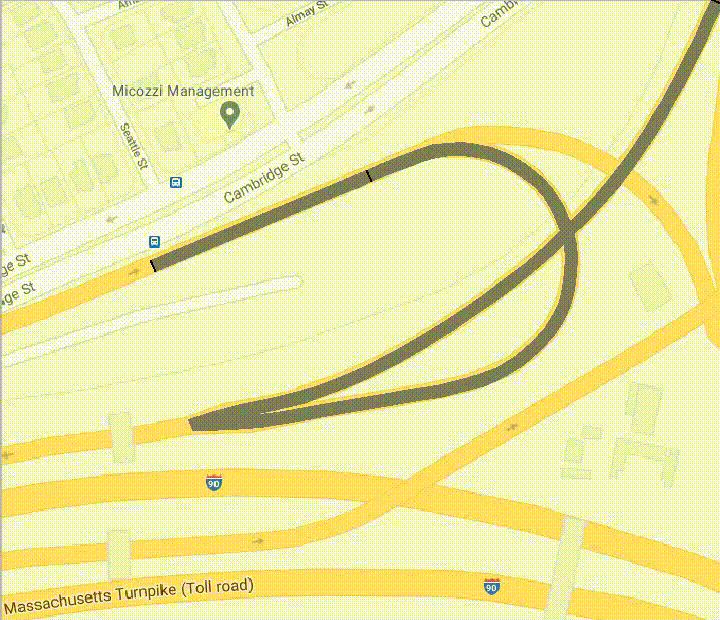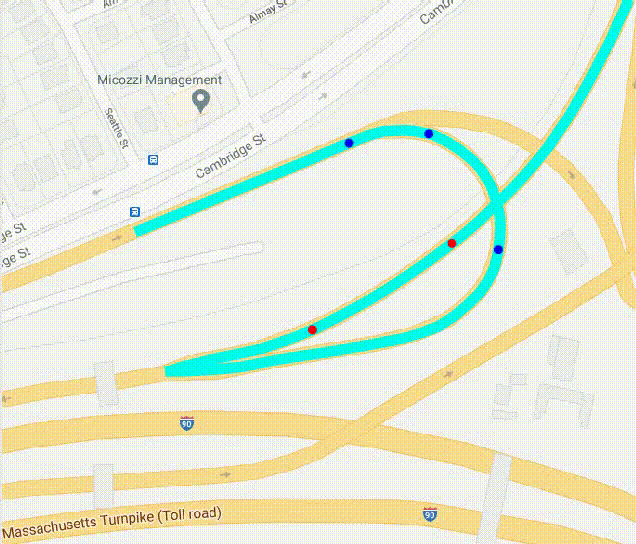Optimal Merging Control for CAVs
-
A new paper written on the optimal control of CAVs when merging to lanes was accepted in Automatica. This research, devised and implemented by CODES member Wei Xiao, addresses the optimal control of Connected and Automated Vehicles (CAVs) arriving from two roads at a merging point where the objective is to jointly minimize the travel time and energy consumption of each CAV. The solution guarantees that a speed-dependent safety constraint is always satisfied, both at the merging point and everywhere within a control zone which precedes it. In the paper, the authors first analyze the case of no active constraints and prove that under certain conditions the safety constraint remains inactive, thus significantly simplifying the determination of an explicit decentralized solution. Their analysis allows to study the tradeoff between the two objective function components (travel time and energy within the control zone). They provide simulation experiments to compare the performance of the optimal controller to a baseline with human-driven vehicles with results showing improvements. See animation below.
|
|
|
Related Publications
Huile Xu, Wei Xiao, Christos G Cassandras, Yi Zhang, Li Li. “A General Framework for Decentralized Safe Optimal Control of Connected and Automated Vehicles in Multi-Lane Intersections”. Submitted to IEEE Transactions on Intelligent Transportation Systems (2019).
Wei Xiao and Christos G. Cassandras. Decentralized optimal merging control for connected and automated vehicles with safety constraints guarantees. Automatica, Volume 123, 109333, 2021.

